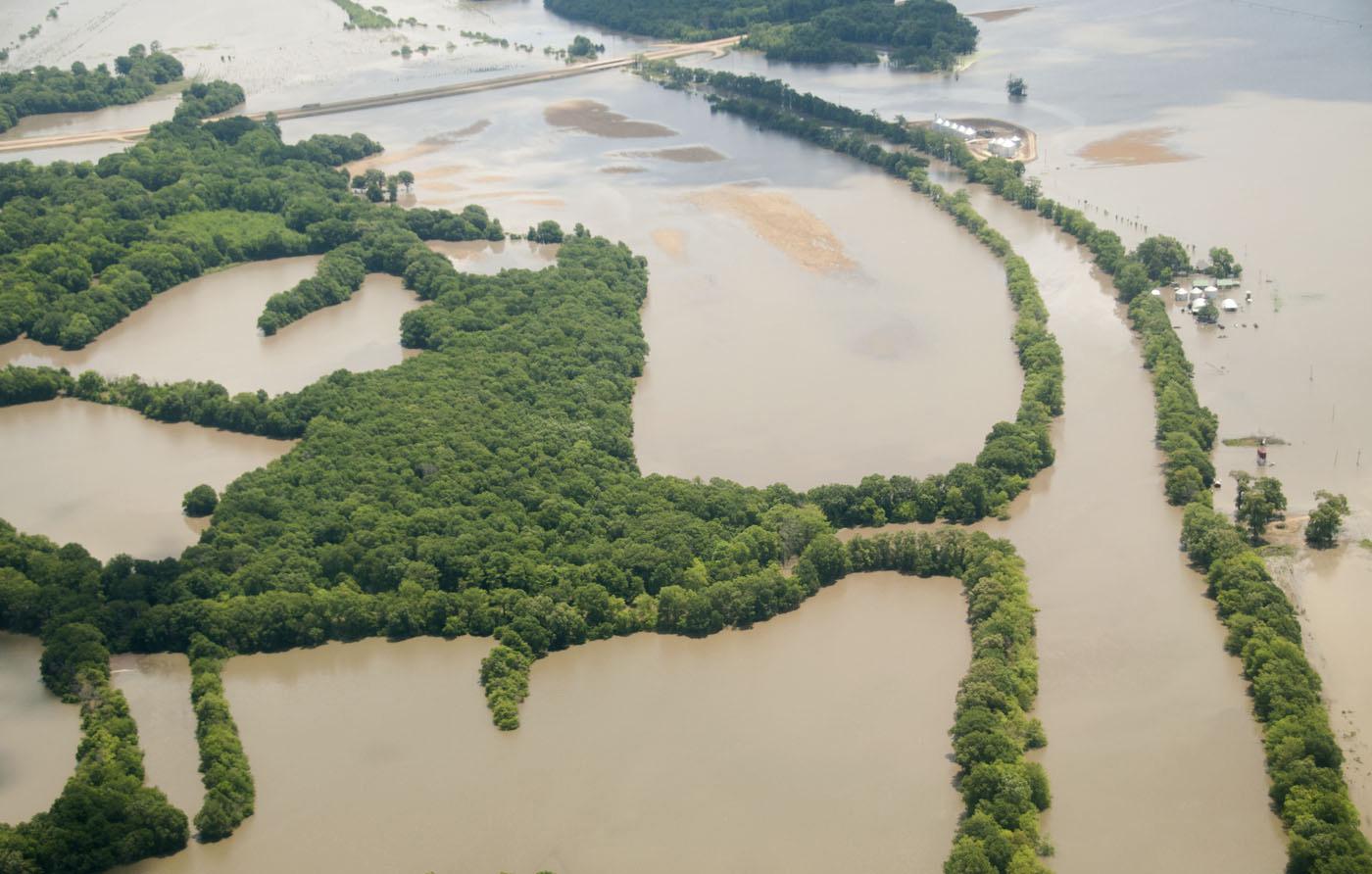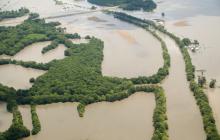Information Possibly Outdated
The information presented on this page was originally released on May 19, 2011. It may not be outdated, but please search our site for more current information. If you plan to quote or reference this information in a publication, please check with the Extension specialist or author before proceeding.
Flooding can stress and damage trees
By Karen Templeton
MSU Ag Communications
MISSISSIPPI STATE – The overflowing Mississippi River is threatening the Delta’s trees, but with the proper care and maintenance, many can and will recover.
The Delta’s forests are exclusively bottomland hardwood, and the trees range from tolerant to very intolerant to flooding. For example, baldcypresses generally fare better than white oaks in flooding situations.
“Every tree is an individual, and its reaction to being in standing water for long periods of time is going to vary,” said Steve Dicke, interim head of Mississippi State University’s Central Mississippi Research and Extension Center. “The big, strong, healthy trees are obviously going to fare better than weak, young or over-mature trees.”
Flooding can be harmful to roots because it saturates the soil and reduces the amount of oxygen absorbed by the trees, increasing the trees’ risk of injury and affecting their growth.
“Basically, the trees suffocate because they can’t get enough oxygen through their roots,” said Brian Templeton, an Extension associate with MSU’s Department of Landscape Architecture. “It becomes even more dangerous if they get completely submerged in water. When the foliage is covered, trees lose the ability to photosynthesize, which causes decline and can lead to death.”
Ted Leininger, project leader at the U.S. Department of Agriculture Forest Service’s Center for Bottomland Hardwoods Research in Stoneville, said the trees most at risk in the Delta are the newly planted seedlings.
“Between January and March, seedlings were planted on abandoned agricultural land as part of the federal Wetlands Reserve Program and Conservation Reserve Program,” Leininger said. “Those trees are just becoming established, and many of them will be washed out by the flood waters.”
After the flood waters recede, several inches of clay and silt will be left behind in many areas. These deposits can quickly damage newly planted trees, Leininger said.
Many trees, however, can survive for weeks in flood waters as long as their crowns remain above water and their roots do not become too exposed.
“People should not assume that their trees are dead and cannot be saved,” Leininger said. “It could be a few months into the next growing season before you can determine whether or not a tree died due to flooding. I suggest letting the trees go through winter and see if they leaf out in the spring before making decisions about tree removal.”
Templeton also advised landowners to assess trees carefully before making assumptions or removing them from their landscapes.
“If soil gets eroded around the base of the trunk and exposes the root system, the roots may have a hard time supporting the tree, and that can be a real hazard if people or property are in the potential fall zone. Trees in situations such as this pose a risk and should probably be removed. Otherwise, leave the trees and keep a careful eye on them,” Templeton, an International Society of Arboriculture Certified Arborist, said.
“Many will have the urge to do a great deal of pruning to their remaining trees, but pruning needs to be kept to a minimum. Prune only the dead and damaged limbs and leave all healthy branches and leaves,” he said. “The trees will need every bit of live roots and leaves to help them recover.”
Templeton said after waters recede, soil may be stripped of nutrients and have a number of chemical deposits in it that can potentially damage trees. One of the most important steps tree owners can take is to have their soil tested to find out what nutrients need to be added back to the soil to help trees recover.
“Also, look for fungi and insect damage,” Templeton said. “Flood-stressed trees become more susceptible to disease and pests, and they will have a much more difficult time defending against them.”
Tree owners should rely only on certified arborists and Mississippi-licensed tree surgeons to assess damage and develop a plan for helping their trees recover.
“It is important to hire only someone who is certified rather than trusting those who show up with no credentials,” Templeton said. “Certified arborists carry liability insurance and have the necessary expertise to make informed decisions regarding the care of trees.”
All three experts agreed that with the proper assessments, care and maintenance, remaining trees will have a good chance of survival.
“An old rule of thumb is that it can take a hardwood years to die,” Dicke said. “Don’t give up too soon.”
To find a certified arborist or tree surgeon, call the local MSU Extension Service office, or check the Mississippi Forestry Commission website: http://www.mfc.ms.gov/pro_tree_care.htm. Click the site’s link to the International Society of Arboriculture to find certified arborists by county.









